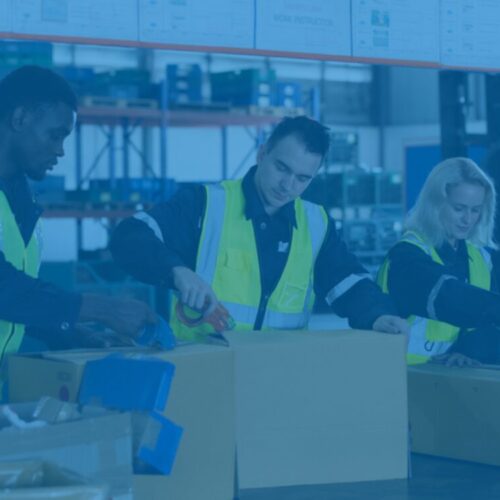
There’s widespread debate about the effect that additive manufacturing will have on the production of consumer goods. Some people think that desktop 3-D printers will remain a high-tech novelty for the foreseeable future and that the technology’s commercial appeal is minimal. Others believe that household 3-D printers are just the tip of the iceberg and that there’s great commercial potential for additive manufacturing when it comes to scaling the production of parts and finished products.
We’ll explore three different product categories to discern what impact additive manufacturing might have on their respective industries as well as what that might mean for the workforces that produce these products.
Toys & Household Goods
A recent study by researchers from Michigan Technological University and 3-D printing platform MyMiniFactory indicated that the toy and game industry could be facing changes. The authors discerned how much it would cost home hobbyists to print the top 100 designs available on MyMiniFactory, and they discovered that the price of printing toys is highly competitive with purchasing similar items.
The researchers discovered that the typical Lego block costs 6 cents at retail, but a compatible block can be printed at home for about a half cent.
There are of course other factors to consider. Access to 3-D printers is currently limited, and printing objects can require a substantial time investment. Assembling objects from multiple printed parts also requires some skill and time investment on the part of the maker. But the competitive price point is definitely a clear indicator of where things could trend in the future for the toy industry.
In the coming years, when they consider the impact of additive manufacturing, toy makers might have to refocus their business model. One of the authors of the MTU study suggests that these companies should re-envision themselves as toy platforms and encourage customers to adapt the company’s professional designs or create add-ons for them. It might also make sense for toy manufacturers to refocus their production on items that are more difficult and time-consuming to assemble at home. This could mean they would have a greater need for skilled designers and advanced assembly workers, which means we’ll have to pay extra attention to how we address the skills gap.
Automotives & Heavy Machinery
It might be too early to tell how additive manufacturing will impact auto makers in the coming years, but it’s already been part of the prototyping process at Ford for 20 years. The process of 3-D printing might not yet be fast enough to produce whole cars at scale, and technology that enables 3-D printing with metal is in a relatively early phase.
But we do have a glimpse of where this is headed.
Many insiders speculate that additive manufacturing will enable auto makers and service providers to reduce transportation costs and simplify inventory management by allowing shops and factories to print parts on demand.
Kit cars have existed for a long time, and since hobbyists are often invested in the look of the car they build, they’ll likely take a pass on the 3-D printing route unless they can avoid striations. But in the future, additive manufacturing can help auto makers, dealerships and service shops take care of parts production themselves. By taking on this production role, they could simplify the management of their inventory as long as they have skilled workers in their shops who can manage printers and test workpieces.
Electronics & High-Tech Goods
Additive manufacturing is likely to make a big splash in the world of electronics production in the years to come. Looking ahead, additive manufacturing could enable a new wave of production for so-called stretchable electronics. The creation of stretchable electronics involves the process of printing circuits into elastic materials so that they can be used as medical devices on the body or as remote sensors. Such technology could also help expand the capabilities of the Internet of Things by increasing the potential placement and uses of sensors.
This means additive manufacturing can open up new possibilities for innovation, which would create new goods, new markets and new manufacturing opportunities. That expansion will eventually require a larger workforce.
On the amateur front, most fabrication laboratories, popularly known as fablabs, feature 3-D printers as a component of a larger production suite that allows hobbyist makers to unleash their creativity. Could this pose a threat to the mass production of high-tech goods in a way similar to the toy industry?
Possibly, but the level of sophistication and dedication needed to engineer and create electronics in a fablab definitely surpasses the amount of attention it would take to download a design and print out toy building blocks or board game pieces at home. In all likelihood, fablabs will help individuals create products that are more meaningful for their own lives without taking a huge chunk of business away from established electronics manufacturers.
Additive Manufacturing Means New Talent Needs
Additive manufacturing is going to play a major role in reshaping workforces in the coming years. On the one hand, it could enable the creation of new biomedical technologies which will create new jobs. It could move jobs from the auto part factory floor into the repair shop as replacement part production is moved to new locations. It might also require manufacturers like those in the toy industry to take on new workers who can help them re-engineer their services into high-tech design platforms for hobbyists.
Does the advancement of technology make you think that your workforce needs an upgrade? Are you having trouble sourcing candidates who have the in-demand skills you need to compete in the future? Discover how we can help you source great candidates by reading our case study, Thorough Vetting Process Fills Open Position in 7 Days.



